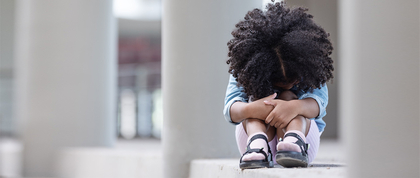
We’ve now passed the two-year mark of the COVID-19 pandemic and surpassed the grim milestone of one million deaths in the U.S. of family members, friends, colleagues and cherished community members. In the face of this staggering loss of life, it’s also important to acknowledge the unprecedented secondary losses we’ve faced – loss of income and livelihoods, shared holidays and milestones, and in-person learning and collaboration.
This collective trauma has created a parallel epidemic of mental illness. As we begin to emerge from the “full-blown pandemic phase” of Covid-19, Mental Health Awareness Month provides an opportunity to examine the long-term implications for global mental health and disaster recovery and resilience.
Children and adolescents have been disproportionately impacted by Covid-19 both psychologically and developmentally. Virtual learning has inhibited the ability to be fully immersed in the classroom and critically engage with material, teachers and classmates, causing setbacks in academic achievement. For students living in low-income communities, these challenges have been compounded by difficulties such as inaccessible or unreliable technology and overcrowding in the home during periods of lockdown. Remote schooling has also precluded critical opportunities for socio-emotional growth through interaction with peers; in school environments children learn how to share, problem solve and express their feelings.
Perhaps most alarmingly, new data from the CDC shows the severe toll that Covid-19 has taken on teenagers’ mental health. In 2021, 37 percent of high school students reported poor mental health, and 44 percent “persistently felt sad or hopeless during the past year.” Some factors that may have been attributable to these outcomes included emotional or physical abuse by a parent or another adult in the home, or a parent or adult caregiver losing a job.
My dissertation argues that disasters, be they biohazards like Covid-19 or natural hazards like hurricanes or wildfires, place stress on households that cascades through family systems and is absorbed by children, manifesting in poor mental and physical health outcomes. And in the face of globalization and climate change, children and adolescents today will be exposed to not one but multiple disasters, whose disruption will pose serious challenges to their mental health and wellbeing.
As public health researchers and practitioners, it’s incumbent upon us to devise interventions that strengthen the family, peer and educational systems of children and teens -- to support their mental health and enhance their long-term disaster resilience.

Gabriella Meltzer, PhD
Class of 2022